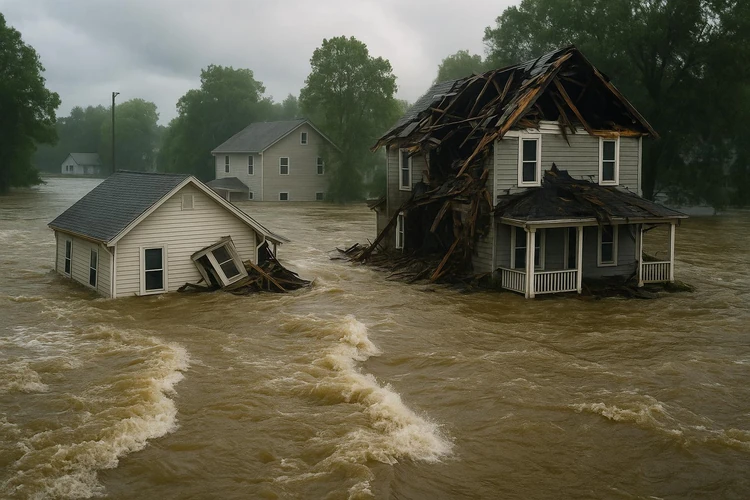Key takeaways:
- Texas, Georgia and Illinois are the three worst states for natural disasters.
- Hawaii, Alaska and Maine are the three states with the fewest natural disasters.
- Natural disaster frequency and losses are worsening, which is hurting homeowners.
Natural disasters are getting worse and residents of some states are suffering much more, raising concerns about buying homes in riskier areas and getting home insurance, according to a ConsumerAffairs analysis of data spanning 1980 to 2024 from the National Oceanic and Atmospheric Administration.
The figures, updated April 8, 2025, include droughts, flooding, freezes, severe storms, tropical cyclones, wildfires and winter storms.
Texas is the worst state for natural disasters, with 190 natural disasters costing a billion dollars or more since 1980 through 2024, followed by Georgia (134), Illinois (128), North Carolina (121) and Missouri (120).
Florida is the worst state for natural-disaster monetary losses, with 94 natural disasters costing around $456.4 billion since 1980, followed by Texas ($440.6 billion), Louisiana ($318.1 billion), California ($156.8 billion) and North Carolina ($137.2 billion).
In mid-2024, Texas was the worst state for natural disasters in terms of dollar losses, but that year's Hurricane Helene helped boost Florida to the top spot.
On the other hand, Hawaii had the fewest natural disasters, with only two natural disasters since 1980 through 2024, followed by Alaska (8), Maine (19), Vermont (19) and New Hampshire (21).
New Hampshire has the lowest natural-disaster losses, with 21 natural diasters costing around $236.9 billion, followed by Alaska ($237.6 billion), Maine ($265.6 billion), Nevada ($292.8 billion) and Rhode Island ($300.9 billion).
Are more natural disasters happening?
In recent years, more natural disasters have been happening and losses have ballooned.
Over 10 years from 2015 through 2024, there were 190 natural disasters, nearly doubling from 96 over the previous 10-year period.
Losses from natural disasters totaled more than $1.42 trillion over the last 10 years of data, also nearly doubling from $769.6 billion over the previous 10 years.
Tropical cyclones, the strongest of which are hurricanes, have accounted for the biggest share of losses in recent years, despite being much less frequent than other severe storms.
Climate scientists say global warming, spurred by industrial activity releasing greenhouse-gas emissions, is making natural disasters more frequent and more destructive.
In 2025, NOAA said there are potential billion-dollar natural disasters it still hasn't added to its data, including the Los Angeles fires, March's severe weather in the South and East, March's tornado outbreak in the Central and Southeastern U.S. and April's flooding and tornado outbreak in the Midwest and South.
How are natural disasters affecting housing?
Natural disasters are making housing less affordable, in large part because they are causing insurers to charge more for home insurance.
Home insurance covers monetary damages from unexpected events, including a burst pipe, hailstorm, fire or hurricane, but it generally doesn't cover flooding that homeowners living in Federal Emergency Management Agency-designated (FEMA) areas have to pay for.
Home insurance is costing more nearly everywhere in the U.S. now: There were only 191 counties among 3,116 where annual homeowner insurance premiums fell in 2024 compared with 2021, according to a study from nonprofit Consumer Federation of America.
For instance, hailstorms have increased 65% over the last three years in Colorado and are driving up home insurance costs in the state.
"While hurricanes and wildfires often attract most attention, a rise in extreme weather events is impacting almost all parts of the country, including many states in the Midwest," said the authors of the Consumer Federation of American study.
